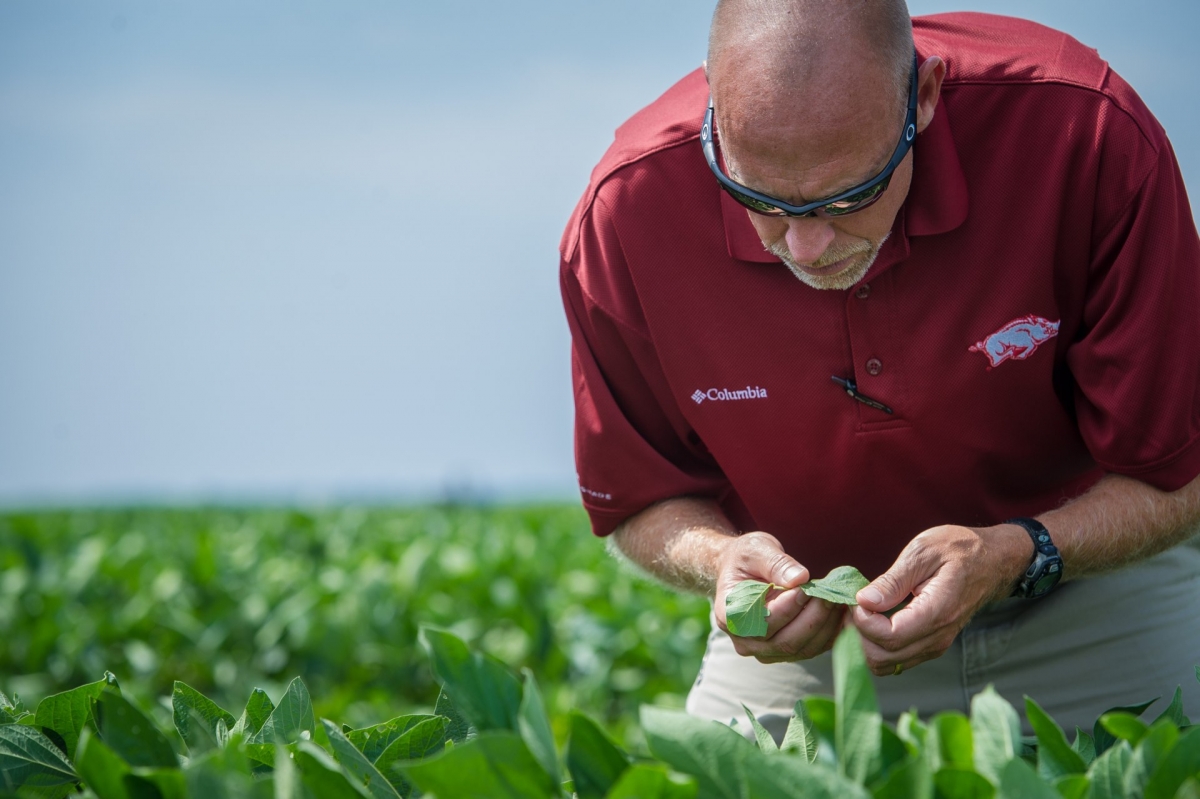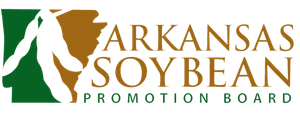Evaluation of Fertilization Practices
Evaluation of Fertilization Practices and Guidelines for Irrigated Soybean
Investigator(s): Dr. Nathan Slaton, UA Division of Agriculture Professor and Director of Soil Testing
Stated Goal:
To improve soil-test-based fertilizer recommendations and plant nutrient management decisions for irrigated-soybean production.
Objectives:
- Evaluate soybean growth and yield to foliar applied solutions that claim to enhance yield by relieving/reducing plant stress and increasing nutrient uptake.
- Continue Phosphorus (P) and Potassium (K) fertilizer rate trials established at Pine Tree Branch Station in 2000 (PTBS) and Rice Research Experiment Station in 2007 (RREC),
- Correlate soil-test P alone or in combination with other soil chemical properties with soybean yield and trifoliate leaf responses to P fertilization.
- Develop and/or refine research-based recommendations regarding soil-test based recommendations, fertilizer application rates and time of fertilization.
Progress/Results:
Our research evaluated four products marketed in Arkansas and other mid-South, soybean-producing states as biostimulants or nutrient solutions for foliar feeding. Soybean yields have not been significantly affected by the foliar application (applications at V3 followed by R1 stages) of Foliar Blend, BioForge followed by Sugar Mover, Perc Plus, and SoyAstim-27 compared to a single early-season foliar application of boron (control). Soybean yield was increased by 3.5 bushels/acre by the application of 60 lbs. P2O5 and 80 lbs. K2O/acre when averaged across foliar product treatments. Our results from 2013 are consistent with findings from 2012 in that P and K fertilization of soybean grown on soils with Low to Medium fertility levels is more important than the foliar application of biostimulants or nutrient solutions.
The long-term P and K trials (since 2007) at the Rice Research Extension Center showed that soybean yields increased numerically as annual-K rate increased, but there were no significant yield differences among soybean that received 40 to 160 lbs. K2O/acre, which yielded 13 to 25% more than soybean in the no K control. Trifoliolate leaf P and K concentrations were affected in each of the nutrient trials showing that trifoliate leaf concentrations generally increased as annual-fertilizer rate increased. Soybean that received no K showed very subtle symptoms of K deficiency during the season and had deficient leaf K concentrations. The mean leaf K concentration of soybeans fertilized with 40 lb K2O/acre/year was marginally sufficient. In 2007, when this trial was started, the soil-test K was Optimum (150 ppm), but in the absence of K fertilization has since decreased to less than 100 ppm. The results indicate that soil-test K availability has decreased when no or an inadequate amount of K fertilizer was applied annually and significant yield differences among the annual-K rates will be measured in future years. Despite the soil having a Low soil-test P level, consistent yield differences are yet to be measured in the P trial.
 The long-term, K-fertilization trial (initiated in 2000) at the Pine Tree Research Station showed annual application of 40 to 160 lbs. K2O/acre produced yields averaged across two Armor varieties, ranging from 70 to 73 bushels/acre, which was 32 to 38% greater than the yield of the no K control (53 bushel/acre). Although yields among annual the K rates (40-160 lbs. K2O/acre/year) were not different there was a trend for yield to increase as K rate increased. The yields of the determinate (Armor 53-R15) and indeterminate (Armor 48-R40) varieties responded similarly to K fertilization providing preliminary evidence that the two growth habits respond similarly to K deficiency.
The long-term, K-fertilization trial (initiated in 2000) at the Pine Tree Research Station showed annual application of 40 to 160 lbs. K2O/acre produced yields averaged across two Armor varieties, ranging from 70 to 73 bushels/acre, which was 32 to 38% greater than the yield of the no K control (53 bushel/acre). Although yields among annual the K rates (40-160 lbs. K2O/acre/year) were not different there was a trend for yield to increase as K rate increased. The yields of the determinate (Armor 53-R15) and indeterminate (Armor 48-R40) varieties responded similarly to K fertilization providing preliminary evidence that the two growth habits respond similarly to K deficiency.
A total of 57 P-rate trials have been conducted over the past decade in effort to correlate and calibrate soil-test-P-based fertilizer recommendations for irrigated soybean. The current database shows that the critical soil-test P defining where fertilization is not needed to maximize soybean yield is 23 ppm, but the 95% confidence interval of this critical point ranges from 15 to 31 ppm. Results show that soil-test P values currently interpreted as Very Low to Medium (≤25 ppm) are not a highly accurate predictor of P availability in silt loam soils used for irrigated-soybean production in eastern Arkansas. In contrast soil-test P consistently and accurately predicts the lack of yield response to P fertilization when soil-test P values are ≥26 ppm. Research is underway to assess, and if needed to refine, the accuracy of our current interpretation of soil-test P and K values. The probability of obtaining significant soybean yield increases and the magnitude of yield increases for selected ranges of soil-test P and K values are summarized in the recently revised Soybean Fertilization Chapter of the Arkansas Soybean Production Handbook (available at http://www.uaex.edu/publications/pdf/mp197/chapter5.pdf)
